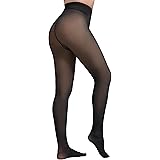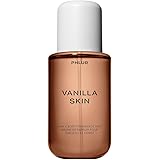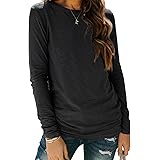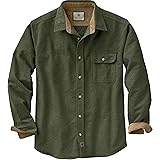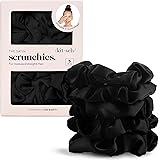Recognized globally, the legendary designs of Christian Dior continue to captivate fashion enthusiasts, with his 1950s creations often cited as peak elegance. It is estimated that by the mid-1950s, Christian Dior’s fashion house was responsible for a substantial portion of French haute couture exports, highlighting its immense international influence and commercial success during the post-war era. The enchanting visuals of classic 1950s Dior, as suggested by the video above, evoke a sense of timeless sophistication and a profound appreciation for sartorial artistry.
This enduring appeal is not merely aesthetic; it is rooted in a pivotal moment in fashion history when women’s clothing was dramatically redefined. The romanticism and refined silhouettes popularized by Dior offered a stark contrast to the utilitarian styles of the wartime years. His vision reshaped wardrobes across continents, establishing an aesthetic benchmark that remains aspirational for many decades later. Understanding the depth of this influence allows for a greater appreciation of the “Dior 1950s vibes” that resonate so strongly even today.
The Enduring Allure of 1950s Dior Fashion
The 1950s marked a golden age for the House of Dior, building upon the groundbreaking “New Look” introduced in 1947. This iconic collection, characterized by rounded shoulders, a cinched waist, and a voluminous, calf-length skirt, quickly became the defining silhouette of the era. The New Look was not just a style; it was a revolution, directly addressing a post-war desire for luxury, femininity, and glamour. Its popularity was immediate and widespread, with reproductions and adaptations appearing across the globe, solidifying Dior’s status as a visionary designer.
Christian Dior himself often spoke of wanting to “put back the poetry” into women’s fashion, a sentiment clearly expressed in his lavish and meticulously constructed garments. The period saw a continuous evolution of his initial vision, with new lines and silhouettes introduced each season, each maintaining the core principles of elegance and precise tailoring. These creations were more than just clothes; they were works of art that celebrated the female form with unprecedented opulence and grace. The profound impact of these designs is something that continues to be studied and admired within fashion academia.
Christian Dior’s “New Look” and its Legacy
While the “New Look” was launched in 1947, its pervasive influence dominated the entire 1950s, setting the stage for Dior’s continued innovation. The collection’s emphasis on luxurious fabrics and an exaggerated hourglass figure presented a stark contrast to the practical, fabric-saving styles of wartime. This aesthetic paradigm shift was swiftly adopted by women worldwide, eager to embrace a more opulent and romantic femininity. Historians often point to the New Look as a significant catalyst in the post-war economic boom for the fashion industry, as consumers eagerly invested in this renewed sense of glamour.
The success of the New Look established Dior as a global powerhouse, and his house quickly expanded, opening boutiques in New York, London, and other major cities. By 1955, it was reported that Christian Dior was overseeing an empire that employed thousands of people and generated millions in revenue annually. His strategic licensing agreements, which were pioneering for haute couture at the time, also ensured his brand’s aesthetic reached a broader audience, embedding the Dior sensibility deep into the popular culture of the decade and creating a lasting legacy that continues to inspire current designers.
Defining Silhouettes: The Essence of 1950s Dior
Throughout the 1950s, Dior continued to refine and introduce new silhouettes, each distinct yet unmistakably ‘Dior’. After the initial “Corolle” line (the New Look), subsequent collections introduced variations like the “H-line” in 1954, which featured a long, lean torso and a narrow, straight skirt, and the “A-line” in 1955, characterized by a fitted top gradually widening towards the hem. These shifts demonstrated a dynamic creative energy, consistently pushing the boundaries of contemporary fashion while maintaining a cohesive brand identity that was synonymous with luxury.
Each silhouette was meticulously engineered to flatter the female figure, often requiring intricate internal construction such as boning and padding to achieve the desired shape. This architectural approach to dressmaking was a hallmark of haute couture during this period. The focus remained on creating dramatic, elegant forms that emphasized posture and movement, ensuring that every garment was not just beautiful but also performed as a statement of refined taste and social standing. The sheer volume of fabric used for many of these designs, sometimes up to 25 yards for a single skirt, underscored their luxuriousness.
Craftsmanship and Fabrics in Vintage Dior
The unparalleled quality of 1950s Dior garments was largely due to the exquisite craftsmanship and selection of the finest materials available. Haute couture ateliers employed highly skilled seamstresses and tailors, often specializing in specific tasks such as embroidering, draping, or intricate beadwork. These artisans spent hundreds, sometimes thousands, of hours creating a single dress, reflecting a dedication to detail that is rarely seen in mass production. Each stitch was placed with precision, contributing to the garment’s structural integrity and aesthetic perfection.
Luxurious fabrics were paramount to achieving the desired Dior effect. Rich silks, satins, brocades, velvets, and fine wools were frequently used, often sourced from exclusive textile mills. These materials not only draped beautifully but also held the complex shapes that Dior envisioned, giving the dresses their characteristic volume and sculptural quality. The weight and texture of these fabrics contributed significantly to the opulent feel, transforming a dress into a tactile experience. This commitment to superior materials and construction is a key reason why these vintage pieces are still highly coveted by collectors today, fetching significant prices at auction.
The Cultural Impact of Dior’s Mid-Century Masterpieces
The influence of 1950s Dior extended far beyond the realm of haute couture, profoundly impacting broader fashion trends and cultural perceptions of femininity. Hollywood stars and European royalty alike flocked to Dior, recognizing his designs as symbols of status and sophistication. The visual language created by Dior—epitomized by the graceful sweep of a full skirt or the elegant line of a tailored suit—became the aspiration for women across various social strata. Mass-market adaptations of his designs were widely available, ensuring his aesthetic permeated everyday fashion.
Dior’s legacy is further cemented by the sheer volume of artistic and scholarly attention his work continues to receive. Retrospective exhibitions, such as those held at the Victoria and Albert Museum, routinely draw record-breaking attendance, demonstrating a persistent fascination with his creations. These exhibitions often feature dozens of original 1950s garments, meticulously preserved, which serve as tangible evidence of his revolutionary impact. His designs fundamentally altered the trajectory of 20th-century fashion, leaving an indelible mark on how beauty and elegance are perceived.
Embracing 1950s Dior Vibes in Modern Style
The allure of 1950s Dior is not relegated to history books or museum displays; its “vibes” continue to inspire contemporary fashion and personal style. Modern designers frequently draw upon the iconic silhouettes and attention to detail seen in Dior’s mid-century collections. Elements like cinched waists, full skirts, or impeccably tailored jackets are often reinterpreted for today’s wardrobes, demonstrating the enduring versatility of these classic designs. Fashion enthusiasts frequently search for vintage pieces or modern interpretations that capture this quintessential elegance.
Incorporating 1950s Dior fashion elements into a modern look can be achieved with thoughtful curation. This might involve pairing a voluminous A-line skirt with a contemporary top, or selecting a structured jacket that echoes the precision of mid-century tailoring. Accessories, too, play a crucial role; gloves, pearls, and classic structured handbags can instantly elevate an outfit with a touch of vintage sophistication. The enduring appeal of 1950s Dior lies in its ability to transcend trends, offering a blueprint for timeless elegance that remains relevant for those seeking refined and distinguished style today.
Capturing Dior’s 1950s Vibe: Your Legendary Dress Q&A
What is special about Dior fashion from the 1950s?
Christian Dior’s 1950s designs are renowned for their timeless elegance and dramatically redefined women’s fashion after the war. They brought back sophisticated, romantic silhouettes to wardrobes across continents.
What was Christian Dior’s famous ‘New Look’?
The ‘New Look,’ introduced in 1947, was an iconic Dior collection defined by rounded shoulders, a cinched waist, and a voluminous, calf-length skirt. It revolutionized post-war fashion by bringing back luxury, femininity, and glamour.
What other types of silhouettes did Dior create in the 1950s?
Beyond the initial ‘New Look,’ Dior continued to innovate, introducing distinct silhouettes like the ‘H-line’ in 1954, which featured a lean torso, and the ‘A-line’ in 1955, characterized by a fitted top widening towards the hem.
Why are vintage 1950s Dior garments considered high quality?
Vintage 1950s Dior garments are known for their unparalleled quality due to exquisite craftsmanship and the use of luxurious materials. Highly skilled artisans spent hundreds of hours constructing each piece from fine silks, satins, and wools.
Can the 1950s Dior style still be seen in modern fashion?
Yes, the allure of 1950s Dior continues to inspire contemporary fashion and personal style. Modern designers often reintroduce elements like cinched waists, full skirts, and tailored jackets into today’s wardrobes.




